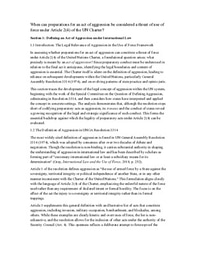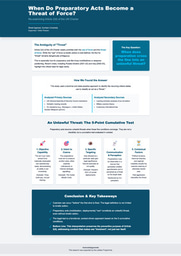Research Proposal
The research question
When can the preparation for an act of aggression constitute a threat of use of force under article 2(4) of the UN charter?
Threats of use of force have been prohibited in international relations since the foundation of the UN. Such a threat can be explicit (formal statements, ultimatums, etc.) or implicit (conduct that implies the future use of force). There is little international or academic consensus on what constitutes the threat of use of use of force, particularly what constitutes an implicit threat. This project explores one of the main forms of implicit threats, the preparation for an act of aggression. Acts of aggregation, in its simplest meaning, are acts of armed forced perpetrated by an actor subject to international law against another. This project focuses on exploring what constitutes the preparation for an act of aggression and when would this constitute a prohibited threat of use of force under article 2(4) of the UN charter.
The objectives of the research
Define "Preparation for Aggression":
- Investigate the scope and meaning of "preparation for an act of aggression" under international law, including whether such preparations must be overt or whether they can be covert actions that may lead to the use of force.
- Analyze whether military mobilizations, arms buildups, and the establishment of strategic military positions or alliances qualify as preparatory actions and, if so, under what conditions these can be categorized as preparations for aggression.
Clarify the Threshold for an implict "Threat of Force":
- Explore the legal interpretations of the term "threat of use of force" as used in Article 2(4), specifically regarding preparations that fall short of actual engagement in armed conflict but still may amount to a threat.
- Identify the legal criteria under international law that distinguish a “threat” from mere rhetoric or signaling, particularly when the preparation for aggression involves actions such as military readiness, strategic posturing, or logistical movements of forces.
Review Case Law:
- Examine how international courts, such as the ICJ, have interpreted threats of force, especially in cases involving military preparations rather than actual conflict.
Assess the Role of Intent:
- Explore the role of state intent and military capability in determining whether preparations amount to a threat of force under Article 2(4).
Propose Legal Clarifications:
- Suggest ways to better define and address preparations for aggression as a threat of force, enhancing the effectiveness of international law.


Please sign in
If you are a registered user on Laidlaw Scholars Network, please sign in